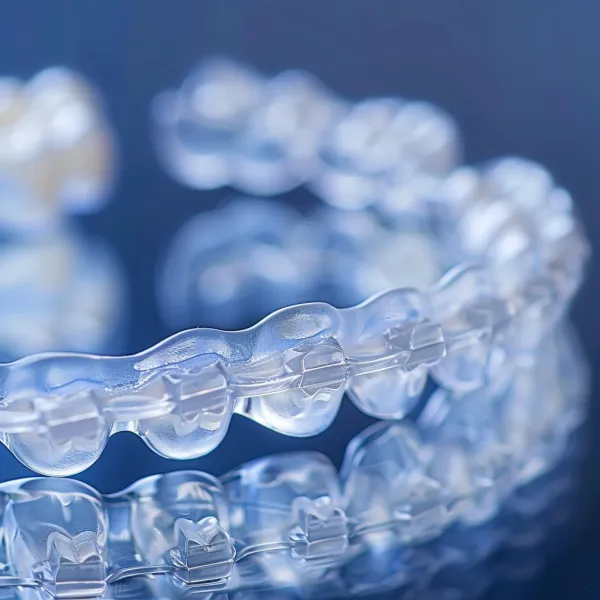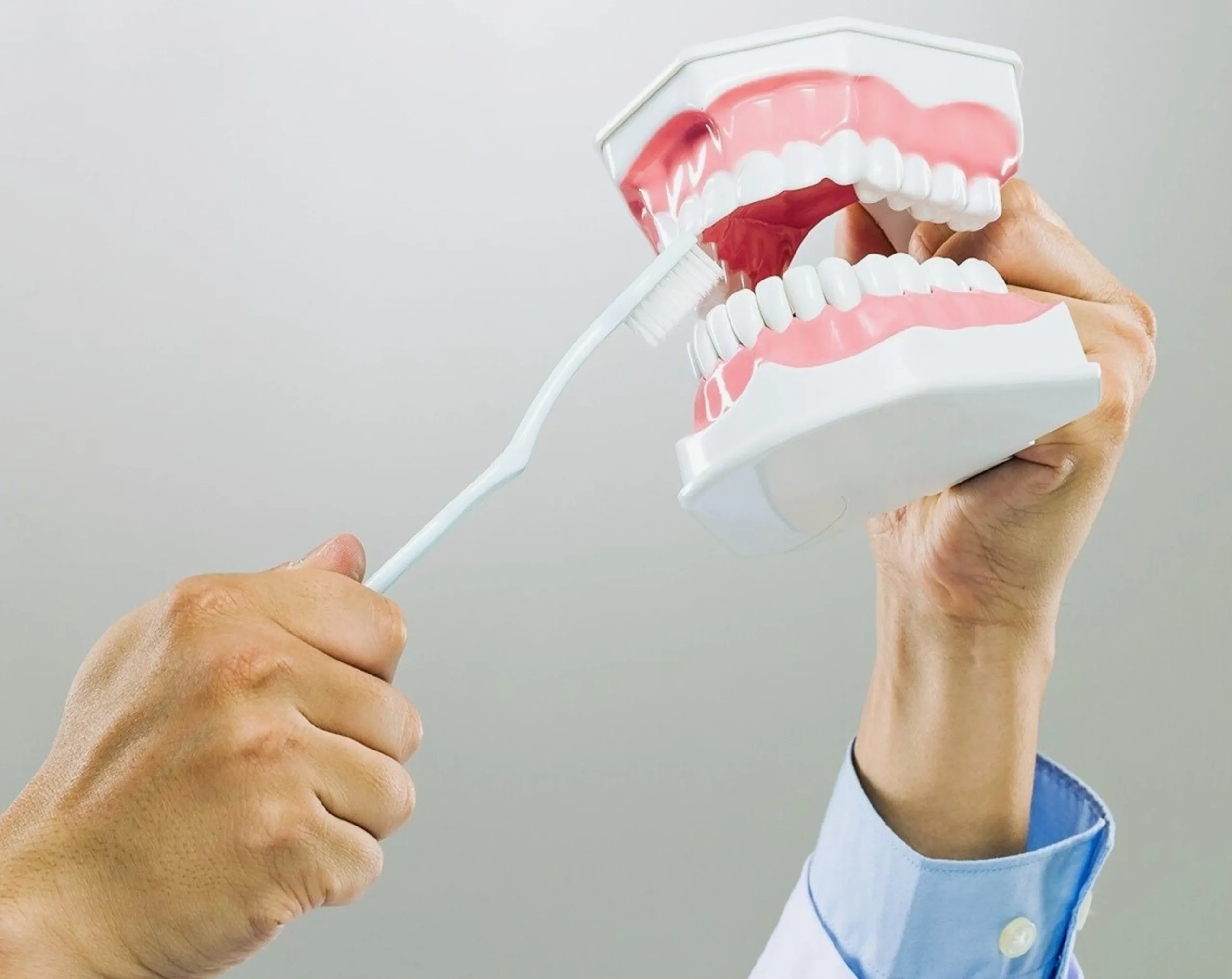How Do Invisalign Work: A Comprehensive Guide
Invisalign is a popular orthodontic treatment that uses clear aligners to straighten teeth. Unlike traditional braces, Invisalign aligners are virtually invisible, making them a more attractive option for many patients. But how do Invisalign aligners work, and what makes them so effective?
Invisalign aligners work by applying gentle, constant pressure to the teeth, gradually moving them into the desired position. Each set of aligners is custom-made for the patient, based on a 3D digital scan of their teeth. Patients wear each set of aligners for about two weeks, before switching to the next set in the series. Over time, this process moves the teeth into the desired position, resulting in a straighter smile.
One of the key advantages of Invisalign is that the aligners are removable, which makes it easier to eat, brush, and floss. However, it’s important to wear the aligners for at least 20-22 hours per day for optimal results. In addition, Invisalign aligners are typically more comfortable than traditional braces, since they don’t use brackets or wires that can irritate the mouth. Overall, Invisalign is a highly effective and popular option for patients who want to straighten their teeth without the hassle and discomfort of traditional braces.
How Invisalign Works
Invisalign is a popular orthodontic treatment that uses clear aligners to straighten teeth. Here is a breakdown of how it works:
Tray Design
Invisalign trays are custom-designed for each patient. They are made from a clear, BPA-free plastic material that is virtually invisible when worn. The trays are designed to fit snugly over the teeth and apply gentle pressure to gradually move them into the desired position.
Treatment Plan
Before starting treatment, the patient will meet with an orthodontist who will create a treatment plan. This plan will include a series of custom-designed trays that the patient will wear over a period of several months. Each tray will be slightly different from the previous one, gradually moving the teeth into the desired position.
Attachments
In some cases, attachments may be used to help the trays apply more precise pressure to the teeth. Attachments are small, tooth-colored bumps that are bonded to the teeth. They help the trays grip the teeth more effectively and apply pressure in the right direction.
Invisalign treatment typically takes between 12 and 18 months, depending on the severity of the patient’s orthodontic issues. Patients will need to wear their trays for 20 to 22 hours per day, removing them only to eat, drink, brush, and floss.
In conclusion, Invisalign works by using custom-designed trays to gradually move the teeth into the desired position. Attachments may be used to help the trays apply more precise pressure. With proper wear and care, Invisalign can be an effective treatment option for many orthodontic issues.
Benefits of Invisalign
Invisalign offers several benefits over traditional metal braces. Here are some of the advantages of using Invisalign:
Discreet Appearance
One of the most significant benefits of Invisalign is its discreet appearance. The clear aligners are virtually invisible, making them an excellent option for adults who want to straighten their teeth without feeling self-conscious about their appearance.
Comfortable to Wear
Invisalign aligners are made of smooth, comfortable plastic that won’t irritate your mouth like metal braces can. They also don’t have any wires or brackets, which means you won’t have to deal with any painful adjustments.
Removable
Invisalign aligners are removable, which means you can take them out when you eat, brush, and floss your teeth. This makes it easier to maintain good oral hygiene during your treatment.
Shorter Treatment Time
Invisalign treatment typically takes less time than traditional metal braces. The exact length of treatment will depend on your specific needs, but most people can expect to wear their aligners for 12 to 18 months.
Customized Treatment
Invisalign aligners are custom-made for each patient, ensuring a precise and comfortable fit. Your orthodontist will create a personalized treatment plan that takes into account your specific needs, goals, and preferences.
Fewer Office Visits
Because there are no wires or brackets to adjust, Invisalign treatment requires fewer office visits than traditional metal braces. This can be a significant advantage for people with busy schedules or those who live far from their orthodontist’s office.
Overall, Invisalign is an excellent option for people who want to straighten their teeth without the discomfort and inconvenience of traditional metal braces. With its discreet appearance, comfortable fit, and customized treatment, Invisalign can help you achieve a beautiful, healthy smile.
Comparison with Traditional Braces
Invisalign and traditional braces are both orthodontic treatments that can help straighten teeth and improve the overall appearance of a person’s smile. However, there are some key differences between the two treatments that patients should be aware of before making a decision.
Appearance
One of the most significant differences between Invisalign and traditional braces is the way they look. Traditional braces are made up of metal brackets and wires that are attached to the teeth. In contrast, Invisalign aligners are made of clear plastic and are virtually invisible when worn. This makes Invisalign a more discreet option for people who are self-conscious about wearing braces.
Comfort
Another difference between Invisalign and traditional braces is the level of comfort they provide. Many people find traditional braces to be uncomfortable, especially during the initial adjustment period when the brackets and wires are first put on. Invisalign aligners, on the other hand, are made of smooth plastic and are generally more comfortable to wear.
Treatment Time
The length of treatment is another factor to consider when choosing between Invisalign and traditional braces. Invisalign treatment typically takes between 12 and 18 months, while traditional braces can take up to two years. However, it’s important to note that the length of treatment can vary depending on the severity of the case.
Maintenance
Maintaining good oral hygiene is important for both Invisalign and traditional braces. With traditional braces, it can be challenging to clean around the brackets and wires, which can lead to plaque buildup and tooth decay. In contrast, Invisalign aligners are removable, making it easier to brush and floss as usual.
Cost
Finally, the cost of treatment is another consideration when deciding between Invisalign and traditional braces. In general, Invisalign tends to be more expensive than traditional braces. However, the cost can vary depending on the length of treatment and the severity of the case.
Overall, both Invisalign and traditional braces have their pros and cons. Patients should consult with their orthodontist to determine which treatment is best for their individual needs and goals.
Cost of Invisalign
Invisalign is an orthodontic treatment that uses clear, removable aligners to straighten teeth. One of the most common questions people have about Invisalign is how much it costs. The cost of Invisalign varies depending on several factors, including the severity of the dental issue, the length of treatment, and the location of the dental office.
According to Dentaly.org, the average cost of Invisalign treatment in the United States is between $3,000 and $5,000. However, the cost can be higher or lower depending on the specific needs of the patient. Invisalign offers several different treatment options, including Invisalign Full, Invisalign Lite, and Invisalign Teen, which can all affect the cost of treatment.
Invisalign Full is the most common treatment option and typically costs around $4,000. Invisalign Lite is a shorter treatment option that is designed for less severe dental issues and typically costs around $2,500. Invisalign Teen is designed specifically for teenagers and typically costs around $5,000.
It is important to note that insurance may cover a portion of the cost of Invisalign treatment. According to Dentaly.org, insurance typically covers around $1,000 to $1,500 of the cost of Invisalign treatment. Some dental offices also offer financing options to help make the cost of treatment more manageable.
Overall, the cost of Invisalign treatment can vary depending on several factors. Patients should consult with their dentist to determine the best treatment option for their specific dental needs and to get an accurate estimate of the cost of treatment.
Aftercare
After completing the Invisalign treatment, it is important to take good care of the teeth to maintain the results achieved. Here are some tips to help with aftercare:
- Wear Retainers: After completing the Invisalign treatment, the dentist will provide retainers to help keep the teeth in their new position. It is important to wear the retainers as instructed to prevent teeth from shifting back to their original position.
- Brush and Floss Regularly: Maintaining good oral hygiene is important for overall dental health. Brush and floss regularly to prevent plaque buildup and keep the teeth clean.
- Avoid Staining Foods and Drinks: Certain foods and drinks, such as coffee, tea, and red wine, can stain the teeth. It is best to avoid or limit consumption of these items to keep the teeth looking their best.
- Schedule Regular Dental Checkups: Regular dental checkups are important to monitor dental health and detect any issues early on. It is recommended to schedule dental checkups every six months.
By following these aftercare tips, patients can maintain their new smile and enjoy the benefits of the Invisalign treatment for years to come.





